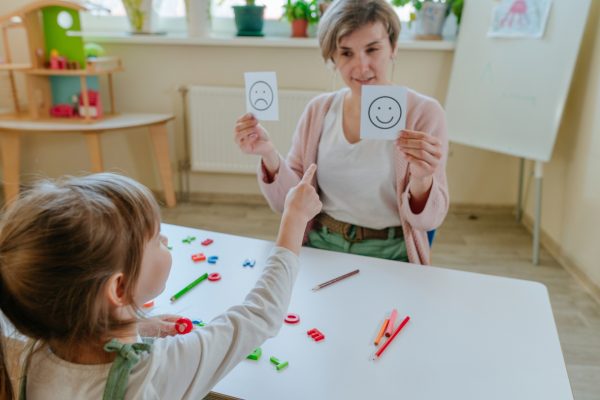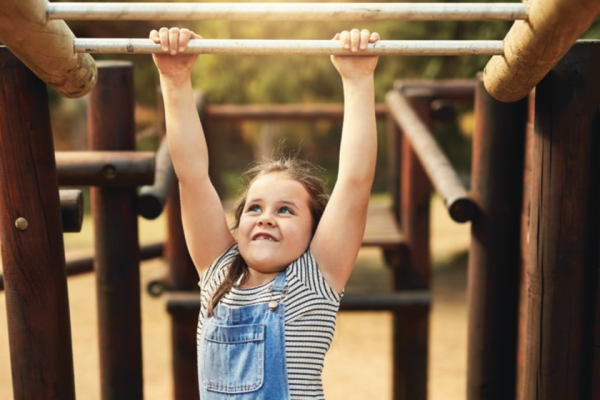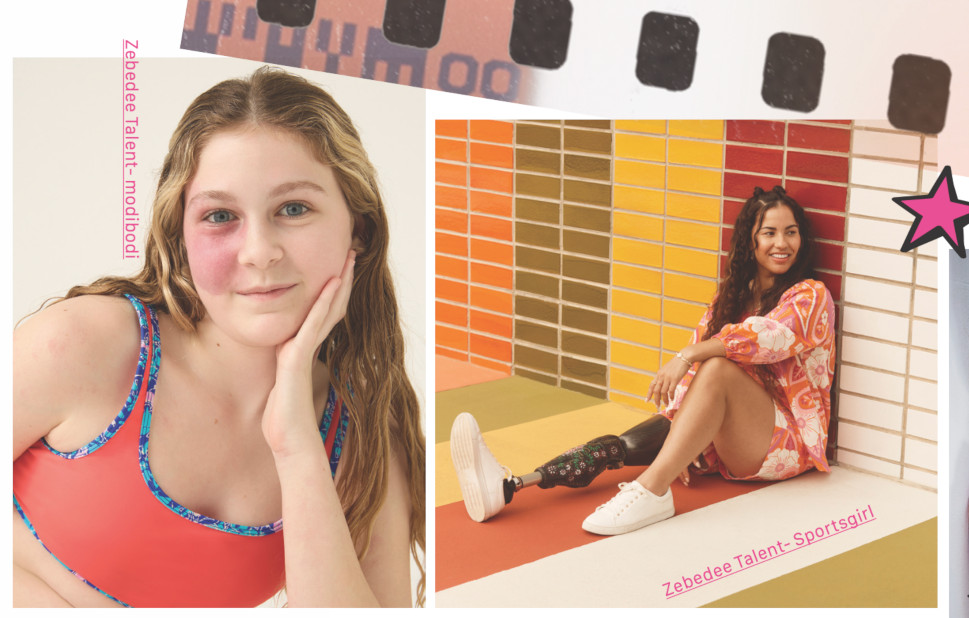
Disability & difference representation: the power of seeing me
By Katherine Granich
All children deserve to see themselves represented in the characters on their favourite TV shows, movies, and even commercials. Katherine Granich delves into how disability is portrayed onscreen – and what the future of disabled representation looks like for Australian media.
Who is your child’s favourite TV character? According to a 2023 report by Screen Australia, only 6.6% of the main characters we see portrayed on local productions are disabled, so chances are your child’s onscreen hero appears typical and able. Disabled characters do occasionally appear – season three of Bluey featured a deaf cavapoo named Dougie, who communicates using Auslan – but are nearly always relegated to the background, in supporting or short-term roles, or with their disability posited as the most distinguishing thing about them.
With nearly 20% of Australians having a visible or invisible disability, this number is shockingly low, but Screen Australia admits it’s an increase on the numbers their 2016 study uncovered – it was 3.6% back then. In children’s programming specifically, levels of disability representation is even lower – 3.8%.
“The rate of disability representation among main characters has improved, but from a low base. Disability remains very much under-represented in TV drama compared to the Australian population and seven in 10 titles feature no main characters who are disabled,” the study states.
So what’s being done to increase disability representation on our screens, and who is leading the way in this space?
REPRESENTING INCLUSIVITY
“When we launched, disability wasn’t featuring anywhere, whether in advertising, fashion, beauty, commercials, TV, film – it was pretty much non-existent,” says Laura Winson, Director of the Zebedee (zebedeetalent.com/ aus), the inclusive talent management agency she co-founded in 2017. “It was unbelievable that this huge group of people didn’t have access to any sort of representation at all.”
Zebedee launched in the UK and now represents over 1,300 disabled, visibly different, nonbinary, and trans clients worldwide, with around 100 – and growing – here in Australia. Their talent have featured in ad campaigns of well- known brands like Google, Samsung, La Roche Posay, Rebel Sport, P+O Cruises, Bonds, Woolworths, Target, and a number of other household names.
“Being able to see someone with a disability, someone who looks just like them, and represents them, has a huge impact on people’s self-esteem and self-worth,” Laura says.
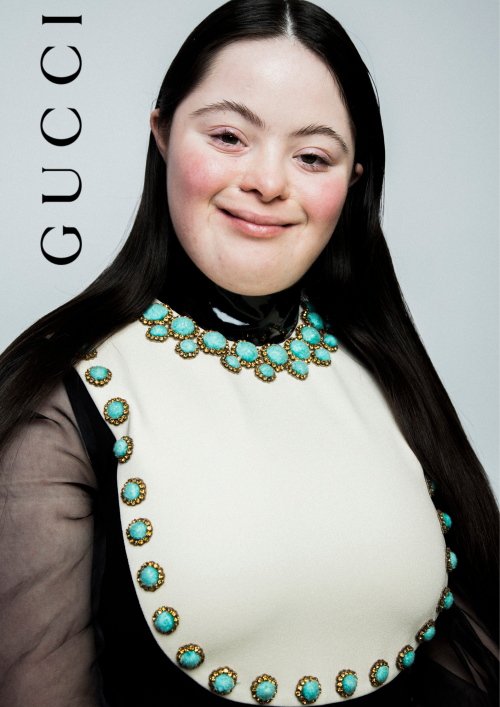
“One of our models – Ellie Goldstein, who has Down syndrome – was on the May 2023 cover of British Vogue. She was also the first disabled model to feature in a Gucci Beauty campaign. Her picture was one of Gucci’s most-liked social media posts ever. That, to me, is evidence that people want to see and engage with disability in the beauty industry. That is powerful.”
Laura is proud that her own children are growing up in a world where disability is seen as “mainstream” – that disability is part of the world we all live in, and that seeing people with visible differences is and should be normalised across the board. She also avoids the term “diversity”, preferring “inclusion”. “Inclusion is a more encompassing concept,” she explains.
“The industry seems to be getting it, and being more inclusive, especially in Australia recently. It’s moving in the right direction. At the time we founded Zebedee, around 0.6% of advertising campaigns featured disabled people. And in the six years since, it’s climbed to around 1%, which is a big shift,” Laura says. “But with the disabled population thought to be around 20%, we still have 19% points to go.
FOCUS ON TALENT
One of the difficulties of the screen industry is that, rather than the disabled actor’s performance taking the starring role, their disability seems to be the reason they were cast. While it’s important to see disability represented authentically onscreen – the industry has a long and disappointing history of casting abled actors to play disabled characters – disabled actors are, first and foremost, actors who are there because they’re talented, and the best choice for the role. Case in point: Actor Rae Pastuszak, who has Down syndrome and is the face of insurance company nib’s popular new TV commercial.

Rae, whose acting experience spans several short films as well as TV and online ads, says her experiences on set have been largely positive – her job search, not so much. “I have had good experiences with crews and co-stars. They’ve asked if I need anything to assist or support me, and everyone has been very welcoming. The harder part is finding roles to audition and be cast in.”
Rae’s mum Dianne agrees. “The roles that Rae is approached for or cast in are generally for things like disability services or photo shoots where the role is for a ‘person with a disability’.
“But Rae would also like the opportunity to be cast in roles that don’t make disability the focus of her story. She doesn’t talk about her disability all the time and it isn’t the most important part of her – she just wants to get on with living life. To quote her: ‘I am normal!’ We think when the film and television industry reach that point, it will feel normal and totally inclusive.”
The nib advert, however, doesn’t draw attention to Down syndrome at all; Rae portrays a nib employee, dressed in businesswear and preparing to meet a client. For a change, disability isn’t the focus of the story, and Rae’s talent shines.
“People who have seen the ad have told me how believable I am as an nib employee and how professional I look,” Rae smiles. “So I guess the ad worked!”
CALLING FOR A SHIFT
nib is one of 10 Australian companies who have signed on to Shift 20 Initiative (shift20.org), a coalition of brands working towards increased representation, inclusion, and accessibility in marketing and communications. Launched in September by the Dylan Alcott Foundation, Shift20 aims to transform disability representation and normalise seeing and hearing people with disability in advertising and media.
The organisation has worked with well- known brands to replace the talent in over a dozen well-known TV commercials with people who have visible and non-visible disabilities – including disabled people working behind the camera, too. That’s a lesser-known deficit of the screen industry; how many stories which include disabled characters are being conceptualised, written, filmed, produced, and worked on by disabled professionals?
BEHIND THE SCENES
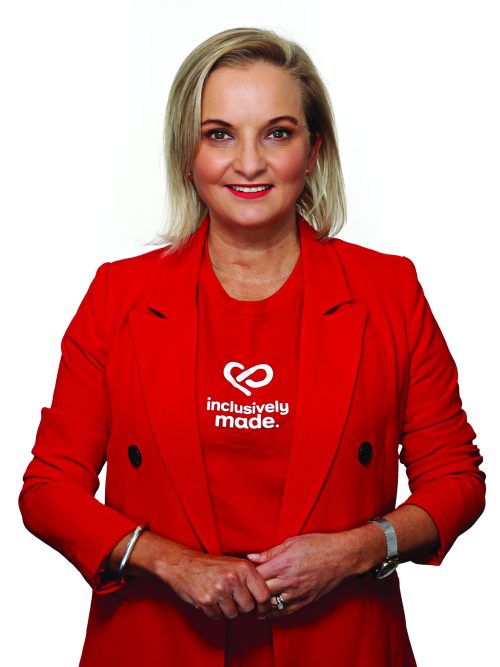

The concept of “nothing about us without us” is integral to the work of Bus Stop Films (busstopfilms.com.au). “Our work is to educate, create, and advocate,” says Tracey Corbin-Matchett OAM, the organisation’s Chief Executive Officer. “Educating through our accessible film studies programme, creating beautiful inclusively made films, and then advocating for change in the screen industry, to build that confidence in an industry which is very exclusive.”
Bus Stop’s accessible film studies programme is a year-long programme taught by industry professionals, giving young adults with mild to moderate intellectual disabilities and autism a grounding in all aspects of filmmaking, culminating in each class producing a short film that’s shown at festivals and on TV. It started in 2009 in Sydney, and this year they have 180 participants in 18 classes across 10 locations – next year they will add three more locations and be almost nationally available.
Tracey believes that content is a most powerful medium for social change, and that incorporating disability into every part of a production is an essential ingredient in enacting that change. “Who’s behind the camera really impacts what we see on screen,” Tracey explains. “It’s an industry that employs a myriad of people in a myriad of roles. When we embed disability into those crew roles, that really changes the lens for what we see onscreen. And it should be open to all of us.”
Tracey is the mother of a Deaf child, and herself is a part of the Deaf community. “It is so, so important to be able to see ourselves onscreen. To be able to see people wearing hearing aids on screen – to not have them covered up or shameful – that is incredibly important,” she says. “I’m really active in and proud of the Deaf community, and to be involved in this industry, to help bring disability to the screen, is a very powerful thing.”
With nearly 4.5 million disabled people in Australia, and only a fraction of that represented onscreen, it’s a medium that’s ripe for education, connection, and aspiration – not inspiration, Tracey cautions, mindful of the difference. “A well-told story can change the world,” she concludes. “If you’re a creative person, having a disability shouldn’t stop you from being involved in the creative side of the screen industry.”
The bigger picture on the big screen
2023’s most-hyped movie of the year was, without a doubt, Barbie. With a budget of $145 million and Greta Gerwig directing, it explores gender stereotypes, oppression, and opportunities for change – and includes three visibly disabled characters. Wheelchair Vet Barbie, Bionic Barbie, and Deaf Barbie all make appearances although, regrettably, their parts are non- speaking.
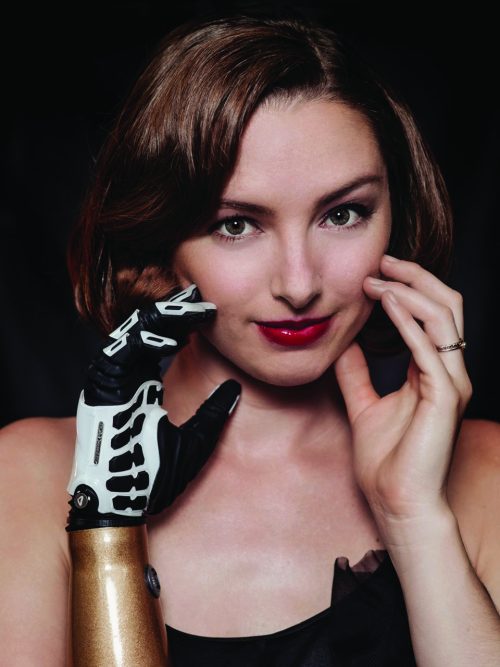

Ashley Young, who plays Bionic Barbie – a Barbie with a limb difference – said in an interview, “Growing up, I didn’t have any sort of role models or any kind of dolls that looked like me, so hopefully this next generation of kids with limb differences, amputees, they can see me in this movie and think this is possible for them as well.”
In the international film industry, the big picture is still somewhat grim. According to a 2019 study, only 2.3% of speaking characters in the 100 top-grossing films of that year were disabled. Perhaps post-pandemic, with more focus on inclusion, we’ll see improvement – and more disabled Barbie dolls for our kids to play with, too.




